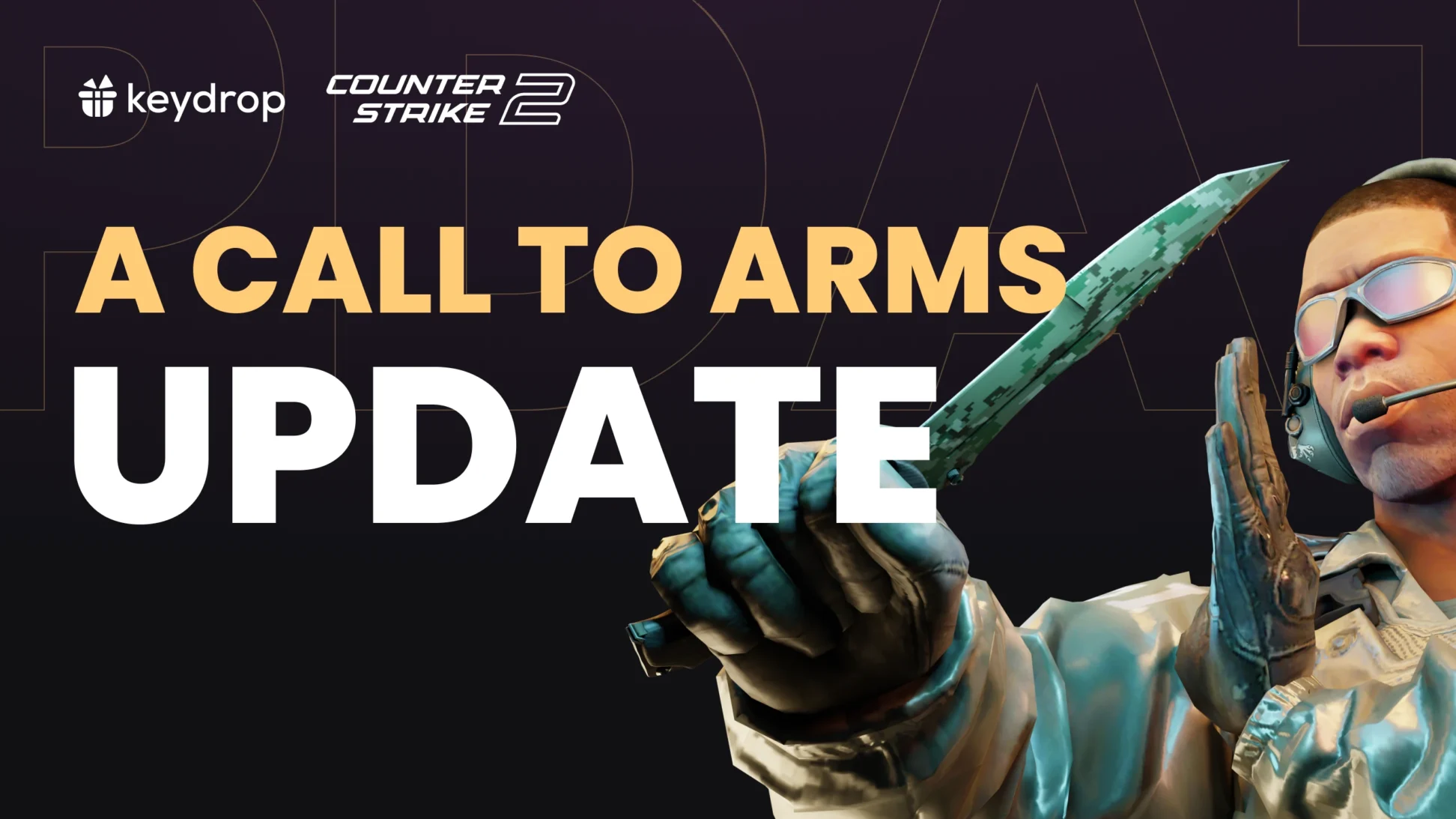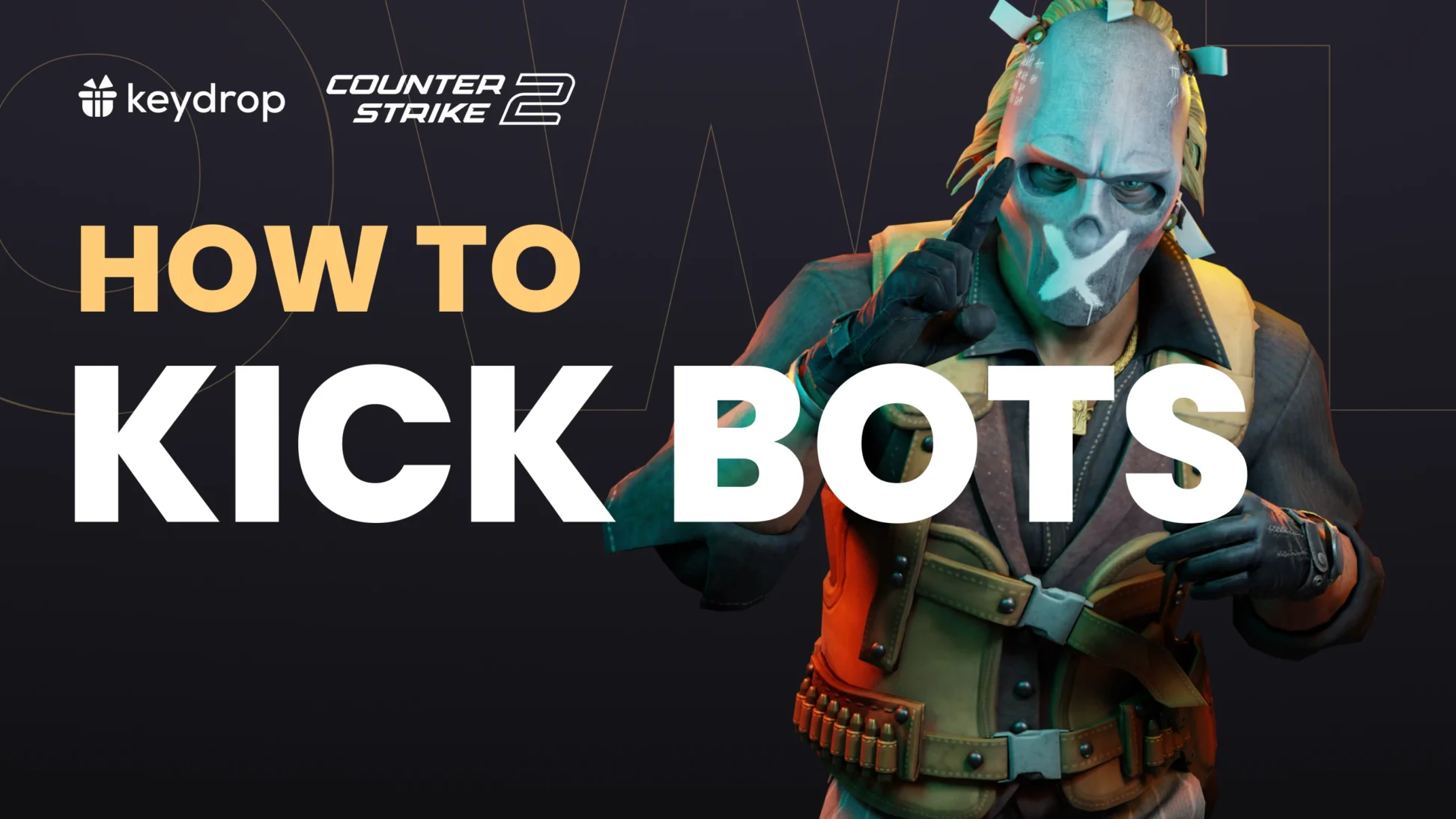Alright, so you feel that you need to get better at CS2?
Well, you just need to git gud!
Just kidding. In this article we’ll give you some tips and tricks on how to get better at CS2. We’ll explore both tactical and mechanical aspects of improving your Counter-Strike skills, with tips from everyone from beginners to advanced.
Contents
Step 1: Aim Steady
Look, every older Counter-Strike player with fading mechanical skills will tell you—gamesense isn’t worth much if you can’t win a simple duel. That’s why, you should start by ensuring your shots hit the heads of your opponents and that you control your recoil. The best way to do so is by warming up in CS2 aim training maps like Ullectical’s AimBotz and Recoil Master. Use them to learn how to control your crosshair and shooting. It doesn’t have to be perfect, but you should be able to both headshot and spray down a moving opponent to have a chance at getting better. It should also help you place your crosshair in the right place. Remember: it should always be ready for a headshot.
Be sure to warm up before every session by using one of the aforementioned practice maps. Your skills will benefit from a bit of a reminder before every game.
Step 2: Map it Out
Once you know how to shoot, the next easiest thing to do is learning a map. Counter-Strike is a game of angles, which means learning the basic positions in which your enemies can be standing and the angles from which you have an advantage, and the timings in which you can end up having a confrontation. While the staple map learning tool of YPrac is still waiting for improvements to the CS2 engine to make its grand return, watching YouTube videos of experienced players on a map will give you a gamesense boost.
Knowing the map will also allow you to make up for a lack of superior aim. If you can surprise an opponent with an unpredictable flank or a smart timing, you’ll seem better than you actually are. Perhaps it’s even worth focusing on one map to start, and then slowly expanding your pool.
Step 3: Economy, Stupid
One of the most underrated aspects of Counter-Strike skills is understanding the economy of your game. Knowing when to full buy, force, or save can be the difference between a win and a loss, that’s why we suggest that as soon as you learn the mechanical basics, you learn the meta basics as well.
Fortunately, this is simple to explain. After every round the winning team receives a prize (between $3250 to $3500, depending on whether they won by elimination or bomb explosion/defusal), while the losing team gets a progressive Loss Streak Bonus, starting at $1400, with an additional $500 every round up to $3400. The bonus decreases after a round win. You can see which “stage” of the bonus you’re on the scoreboard. The terrorists will also receive an additional $800 if they lose a round in which they planted the bomb. Yes, this means that you can win a round as a CT and get $700 less than your T-Side counterparts.
You will also get a kill bonus, depending on the weapon you use. Rifles, P90s and nades bring you $300, the AWP and CZ$100, other SMGs net you $600, shotguns $900, pistols $300 and knives $1500.
Now, the trouble is that a “full buy” (so stocking up on all the equipment you need) costs around $5000-$6000 (and way more if you’re an AWPer, sorry to all point-and-clickers out there). This means that you have to plan out your economy ahead to ensure that you have as many full buy rounds as possible during the game, and make the most out of rounds where your enemies are strapped for equipment.
This means that you not only have to count your money (thinking about when to avoid a buy entirely, in order to save for the next round, when you can force a buy as you’ll have enough for the next round), but also count your opponents’ money (when to buy SMGs and shotguns for an anti-eco round).
Figuring it all out and constantly counting (and guiding your team, which can be hard) will help you win games simply by outsmarting your opponents and having the best possible equipment every time.
Step 4: Learn How to Move
The next step on your road to CS2 superstardom should be learning movement… and we don’t mean bunny hopping like the legendary phoon (although we’re sure that’s also useful to an extent).
Instead, we’re talking about the boring kind of movement. How you approach angles, how you peek, how you behave in a gunfight.
It’s extremely hard to explain in text form, but essentially, the main point of movement is to shoot and not to be shot. This ties into the previous two steps, as you have to have good crosshair placement (that is, always at the spot where you expect the enemy to be) and good map knowledge to know how to peek each angle.
How far you stick out when going into a gunfight, when you stop, whether you move between shots all help you become not just a better shooter, but a harder target to hit, using the game’s mechanics to your advantage. If you ever wonder why other players seem to have an easy time hitting you… it might be your movement.
There’s a bunch of information on channels such as WarOwl and voo about how movement works exactly, but practice is much harder. Until YPRAC is adapted to CS2, your best bet is to practice map movement in Deathmatch, and strafing in AimBotz.
Step 5: Utility
If you want to take your CS2 skills to the next level, you’re going to need to learn how to use smokes, molotovs, frag grenades and flashbangs to your advantage. There are many tutorials online on the best smokes on each map, and you should probably learn at least all the basic smokes. For example, for Mirage the basic T-Side smokes would be: Jungle, Stairs, A-Site CT, Window (it’s a hard one), and short and kitchen on B.
But why learn them all? Well, when you’re playing with people you don’t know, utility knowledge will allow you to fill any role that is missing in your setups, as oftentimes somebody doesn’t know that one pesky smoke that can help you win the round. If you play in a 5-stack, you can mostly focus on one or two smokes, flashes or mollies as your specialty, but even then, it’s good to know the others, for example, if you have a better spawn for a quick execute.
Step 6: Learn the Tactics
Speaking of executes, once you have the smokes down, the next step would be learning how to call the game in a basic manner. While it might be hard in PUGs, if you find some friendly neighborhood teammates who are willing to play ball, you can start instructing them to do the best possible thing. While at lower ranks, the core of your work will be telling everyone which site to go to and synchronizing the utility usage, at higher ranks, it’s possible to communicate advanced strategies with people who are also in the know.
An important part of learning the tactics is also analyzing your opponents’ tactics. Does your opponent go to Window on mirage every round? Smoke or molly him out, or take two players to set up a bait-and-switch trade. The T-Side is taking control of Middle too easily on Inferno? Post up an AWPer, or use a smoke to get some aggression in from one of the sites.
Tactics naturally come as you play the game, but watching pro tournaments will help you understand what you should be doing. For example, a simple tactic for a full-eco round on T-side Mirage is to stack 4 players in palace with the bomb, and have one player throw two flashes from ramp (the only thing you’ll be buying in the round), with the remaining players using the flashes to rush out of palace, and with a bit of luck, planting the bomb for that sweet $800 bonus, allowing a better buy in the following round.
Things like that don’t always work. Smart teams will have a player stationed under Palace to mow down these players, but the risk is worth it, given that this setup can make the bombsite open for (short-lived) business.
Learning the tactics will also help you communicate more clearly with teammates and avoid silly misunderstandings that can cost you rounds, or even games.
Step 7: Join FACEIT
Tired of cheaters and griefers? Well, heading to FACEIT might be a solution for that. With the platform offering high-level play with a solid anti-cheat, it will be a challenge, but also a cleaner and better CS2 experience. And after all, playing with better players will naturally make you better, so heading there for PUGs may be a great way to improve your skills in a natural way… even if a bit frustrating.
Step 8: Find a 5-Stack
Look, if you want to advance in the ranks, whether it be CS2 Premier mode or FACEIT, you need people you can trust. Random teammates are great to hone your individual skills, but at the end of the day, building chemistry with a group of friends will always be beneficial, as you will create strategies and tactics, and will always have better communication that a bunch of PUG stars. That’s why, if you find somebody you vibe with, get them to play with you. You can start off small and build up your team as new fun people come along. This won’t just make you better at CS, but will also make your CS experience better.
Step 9: ???
Step 10: Profit
Aaand that’s all. Once you put together all those tips and tricks, you should be able to play at a higher level. As you can see, it’s a lot of work, but hey, which game isn’t? So, if you want to become a Global Elite, or Level 10 FACEIT… this won’t quite get you there, but will surely be a big step to becoming a better CS2 player!


